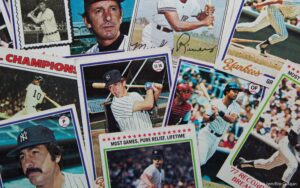
Height and weight
When setting up a bat for a ball player, there are three main parameters to consider. Height and weight are the first parameters to consider. A small player cannot go on a plate with a 42-inch Ruth wooden stick, but he needs more than a toothpick.
Material
Secondly, the understanding that a bat is made from wood or composite metals is also extremely important. Lighter is not always better. Just ask Tirus Cobb what he thinks baseball was about base hits and running corridors, not at home runs.
Bat technology
Thirdly, the definition of bat technology, its trunk size, conical shape, grip and weight underestimate aspects of the choice of batting. If George Brett had used pens attached to the handle instead of pine resin, he would not have had a home run against the Yankees in 1983.

The first parameter is the ideal starting point
Two tables that describe the relationship between age, height, weight and length of bits, can be seen in the “Perfect fit in the bat” on the page of the blog “Baseball for diamonds.” See Link below.
The second parametric solution relates to bat materials
With the current ban on metal bits throughout the country, wood may be the only option in the near future. You can choose ashes, maple, birch, bamboo, walnut, or a combination of these. The quality of wood is the most outstanding feature. Big “spirit” is the highest quality wood – the best big barrel bats. This means that the longer and wider the grain of old and denser trees, the better. Wood adapts to a perfect fit more than its metal cousin. High-quality ash each time exceeds the quality of the maple. Wood brings a classic feel, and what a wonderful sound! The quality of possession of the bat is all in the business of baseball bat. Now, with the Little League moratorium on composite bats, bat quality has become a major focus for players and their sponsors.
However, bats made from metal are still available
Some state jurisdictions are trying to test their trampoline effects and make the impact of the ball more similar to wooden bits. Metal bats should be more durable than wooden bats, and fused with combinations of zirconium, zinc, copper, magnesium, graphite, titanium and aluminum. Aluminum alloys, which freeze and then reheat, provide greater strength while reducing the bite and lengthening the flight of the ball. Manufacturers claim that metal bats have a wider sweet spot than wooden bats, but this has not been proven.





